Nanoxia Deep Silence 2 Case Review: Trimming the Fat
by Dustin Sklavos on February 14, 2013 12:01 AM EST- Posted in
- Cases/Cooling/PSUs
- quiet
- ATX
- Nanoxia
Noise and Thermal Testing
Going into testing, I remained cautiously optimistic about the Nanoxia Deep Silence 2. Most of the original design cues are essentially intact from the DS1 and I remain overjoyed as ever by the inclusion of the analog fan controller, but silent cases still continue to run the age old risk of restricting airflow to the point where heatsink fans have to run much faster to keep thermals down.
Whenever I include test results from older cases with fan controllers, I tend to include the results that present the best balance of noise and performance. The Deep Silence 1 is unique in that it's one of the only cases where I include the high fan results instead of the low, as the low setting is essentially inaudible while the high setting is only marginally louder while producing substantially better thermal performance. You'll see the DS2 is basically the same way.
Ambient temperatures hovered around 22C during testing.
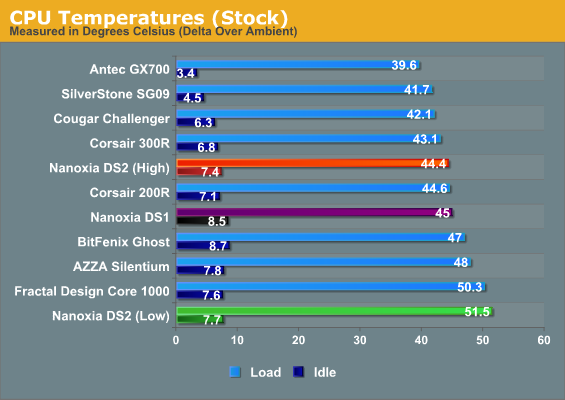
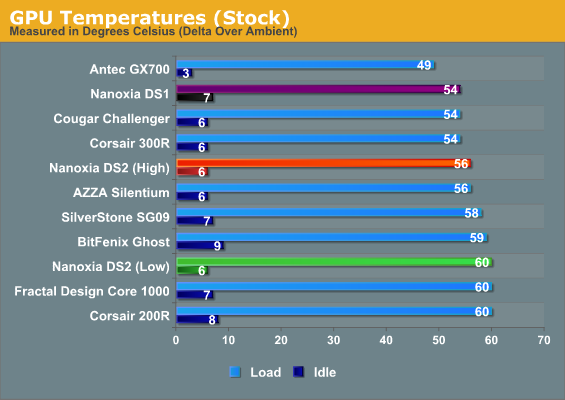
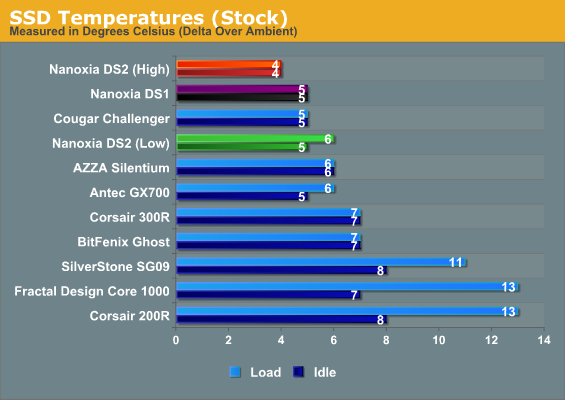
The DS2 runs into the same problem the DS1 did: the low fan setting just doesn't move very much air. It's quiet, sure, but it also runs very hot. At their respective high settings, though, the DS1 and DS2 do offer fairly comparable performance.
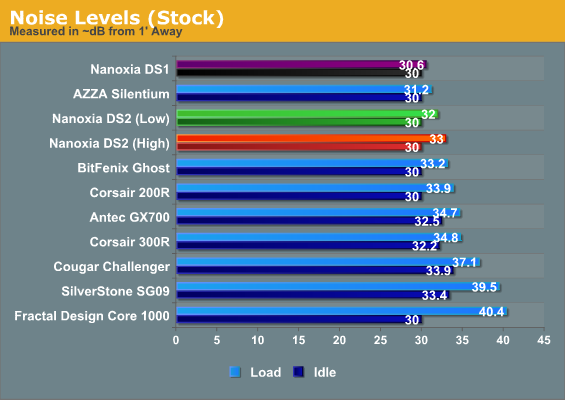
Unfortunately, you'll see the DS1 also has generally better acoustics than the DS2 does. The DS2 is still a very quiet case and it beats the BitFenix Ghost, but the AZZA Silentium runs ever so slightly quieter. Your best bet for silence continues to be the DS1.
When I saw the thermal results for the DS2, at least at the low fan setting, I lost some of my optimism. It's only when you max out the fans that the DS2's performance becomes competitive, but this is the trade you traditionally make when you move to a silent case.
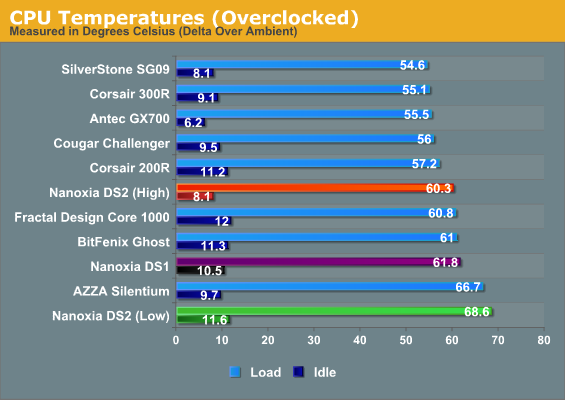
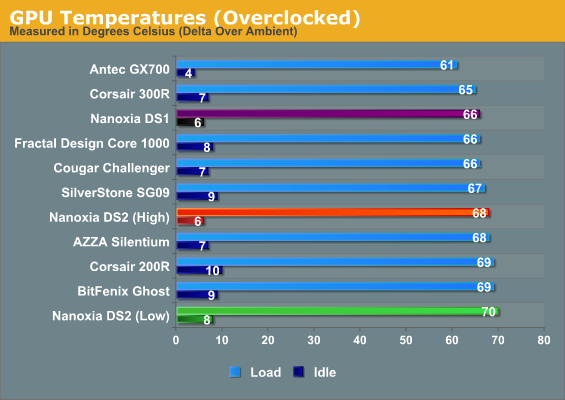
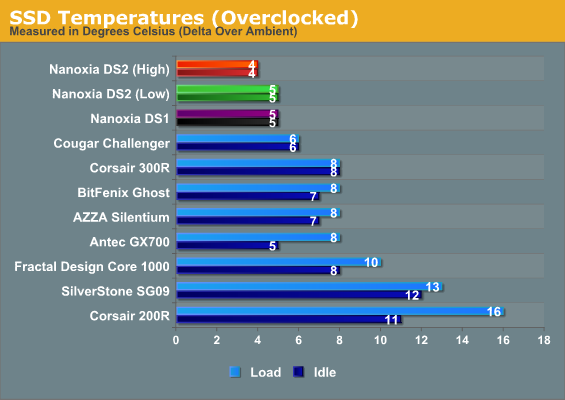
Overclocked thermals remain fairly competitive provided you leave the fans on high, and the DS2 puts in a strong showing against its predecessor.
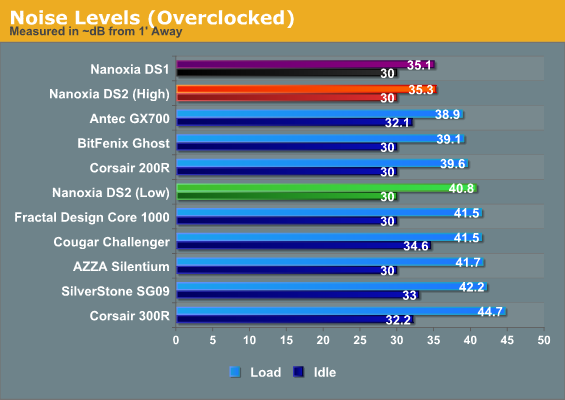
The noise level results get back to what I was talking about before; because the low fan setting doesn't move as much air, the heatsink fans spin much higher, and the DS2 actually gets pretty loud as a result. If you max out the fans, the DS2 is suddenly one of the quietest cases we've ever pitted against our overclocked testbed.










39 Comments
View All Comments
zinton - Thursday, February 14, 2013 - link
Does anyone know a retailer in the United States that ships to Hawaii, and sells the Deep silence 1 or 2?headbox - Thursday, February 14, 2013 - link
Amazing how far we have NOT come in case design in the 20+ years I've been building computers.jabber - Thursday, February 14, 2013 - link
I know, it's like time has stood still.Just moved on from beige and that's about it.
lurker22 - Thursday, February 14, 2013 - link
Maybe because there really isn't much to holding a few parts together in a box?arthur449 - Thursday, February 14, 2013 - link
Well, when I started building computers, the CPU was located at the front bottom of the case. Then came ATX, and then BTX compatible cases... then everyone said "meh" and kept ATX.It's just not worth it to make a new standard for cases and motherboards when custom builders are such a small portion of the overall market. All the big companies pay for custom boards if they need them, but most consumer-oriented brands have thrown in the towel and use mATX for lower cost and higher customer satisfaction due to future upgrade compatibility with different boards and add-on cards.
GotThumbs - Thursday, February 14, 2013 - link
Agreed.My first build was an AT case and I haven't built an ATX system for myself or anyone else is quite a few years. Most of my systems have been mATX based using Apevia QPACK cases with an upgraded PS. My systems/users are not for heavy gamers, so multiple graphic cards are not needed.
I am moving my personal systems to mini-ITX format now. I find it unnecessary these days to have a big case, since I have a separate home-server for all my content storage. Using a SSD and an AMD APU based system more than does the job for my needs.
Best wishes,
Zak - Thursday, February 14, 2013 - link
The ATX standard is adequate. But why is so hard to make a good looking AND functional case? There are some good looking cases that are barely functional, some functional cases that are butt-ugly and everything else is either boring or gaudy.LordOfTheBoired - Saturday, February 16, 2013 - link
Because everyone's idea of good-looking is different.Some people like plain square boxes, some like case doors, some like plexiglass windows, some like blinky lights, some like black mesh, some like pointy bits...
Ask ten people to name the best-looking cases on the market, expect ten different answers.
Personally, I like the original Phantom. I don't understand how the best-looking case I've ever seen can be considered gaudy, but obviously tastes differ.
I used to run in an old Antec Solo that I also loved(though not quite so much). And I've never understood how it could be considered ugly, but some people did.
michaelheath - Thursday, February 14, 2013 - link
I'm sure it doesn't help case designers that the ATX specification has been around since 1995 and hasn't changed all that much since. You can only do so much when your case design revolves around a 12" x 9.6" flat board (or a 9.6" x 9.6" or a 6.7" x 6.7" board, for that matter). Motherboard designers and component manufacturers would have to agree on a new specification for us to see a radical change in 'standard' case designs.ShieTar - Thursday, February 14, 2013 - link
Really, you can't see a big difference between the DS2 and this thing: http://interloper.com/graphics/cases/mid_tower/mpe... ?You know, the AT-case with the non-replacable power supply, because it needed to be hardwired to the front-panel power button? And all those sharp-edged, hard to access drive cages? And the total lack of any kind of ventilation outside of the power supply, because nobody owned a 225W-GPU anyways, let alone several?